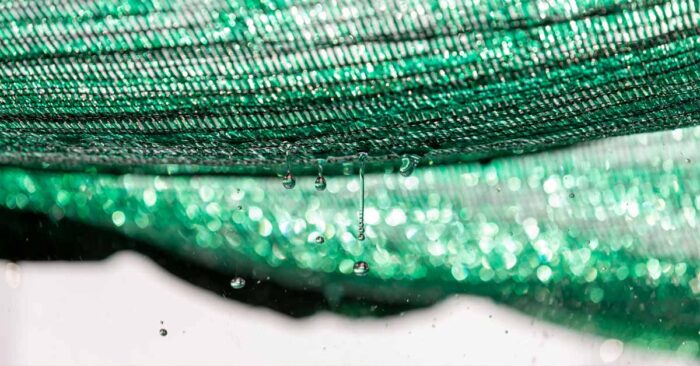We’ve all seen how today’s climate can be quite unpredictable. One day we’re shivering in the cold first quarter air from the northeast monsoon, then suddenly we get sweltering temperatures that can reach up to 40℃! If you are a botanical enthusiast, just imagine how much damage that heat can deliver if you don’t have any shade nets for your plants.
Shade nets, like the ones produced by one of the country’s trusted provider Philippine Ranging Nets and not those makeshift nettings made from scrap, are essential if you are tending nurseries and gardens as they not only protect your plants from wind, heat, rain, and other such weather disturbances, but they also keep away pests and birds that can feed off of them. They are easy to install and are mostly affordable even with the most durable types.
Of course, installing shade nets should also go with some other stuff you would have to do regularly to ensure that your plants don’t die of heat stress.
Here are some simple ways you can protect your beloved plants from the incoming summer heat.
1. Pair your shade nets with mulch


Don’t hats and umbrellas always come in handy when we find ourselves walking the streets during high noon? There’s no doubt we’ll exhaust ourselves rather quickly without any protection from direct sunlight as heat stress signals our brain to tell our muscles to slow down as fatigue sets in. The same goes with your plants and the many varieties of shade nets you’re going to have to get accustomed to. Sunlight can cause great damage to plants and shade nets are your plant savers that go well with reflective mulch in retaining water, reducing evaporation, and helping in plant growth.
Mulch is simply any organic material such as dry grass clippings, tree bark, wood chips, or pine saw that serves as another protective layer for the soil. It offers great help by reducing the amount of work you have to do in terms of watering and protecting your plants. These days, reflective polymeric mulch sheets can now be purchased in local stores which also helps in preventing soil erosion and keeping unhealthy soil that can cause your plants harm at bay.
2. Don’t let your plants go thirsty


Summer days are not all beach balls and dips in the pool. Most days we spend our time thirsting and fighting off dehydration. Your plants need the same nourishment during hot days especially in the morning to keep shallow roots from drying. Giving your plants their dose of early morning water gears them from what high temperatures lie ahead of the day and prevents their leaves from becoming brittle.
At noon, water your plants a second time if they look dry and don’t mind those myths about drowning your plants from midday watering as plant experts have already debunked that. Watering your plants at night can lead to fungal spores that can infect leaves so make sure that they get ample hydration during the daytime and are well-protected from the heat with shade nets and mulch.
3. Try floating row covers


Aside from shade nets, a floating row cover made from woven plastic, polyester, or polypropylene material is another helpful tool that can prolong your plant’s growing season while still protecting them from heat. The difference between these floating row covers and shade nets (aside from how the former can be a lot more expensive), is that it takes more effort and research to set up a floating row cover such as those supplied by Rimol. These structures have various dimensions, mesh sizes, and designs that are more ideal for larger greenhouses than your backyard garden. Not being meticulous in setting up floating row covers can lead to trapped heat and cause shading fails for your poor plants.
4. Let the old shade the young


Just as how parents nurture their children, grown plants that can offer some shade to your young transplants is another way to prevent your smaller plants from overheating, especially if you don’t have the money for floating row covers.
However, always remember that grown plants need their share of shade too because they can also be hit as hard by sunlight as the younger ones. Place a shade net with the right mesh size over your grown plants before you plant transplants under their cover. Ensuring that every plant gets the right temperature, sunlight, and shade is important as permanent shade can be just as bad as having no shade at all.
5. Plant your seeds deeper


Gardening under the scorching heat of the summer sun is definitely a balancing act especially if you are in a tropical country like the Philippines. Aside from the rapidly changing weather, the sun’s heat can be quite unmanageable during the mid-year season.
If you are going to plant seeds during the summer, plant them deeper into the soil to prevent them from dehydrating as they grow. While there’s a risk in how your seeds may not be able to germinate, there’s always a workaround in providing them with ample oxygen and water while deep into the soil. Besides, planting them too shallow has its own risks too in that your topsoil can quickly dry up and deprive your plants from getting the right amount of water throughout the day or may simply be swept away from the soil if you water them too often. For hot summer days, deep seed planting is definitely the way to go.


You can surely reap more plant benefits by simply following these simple tips but be sure to practice them with utmost quality. Shop for quality mulch, floating row covers, or shade nets and avoid trying some DIY stuff if you are not sure how each tool should work.
For reliable shade nets, it’s best to contact Philippine Ranging Nets at [email protected] or call +63977 007 0228 and consult which specifications are right for your garden or greenhouse before the summer season sets in.




